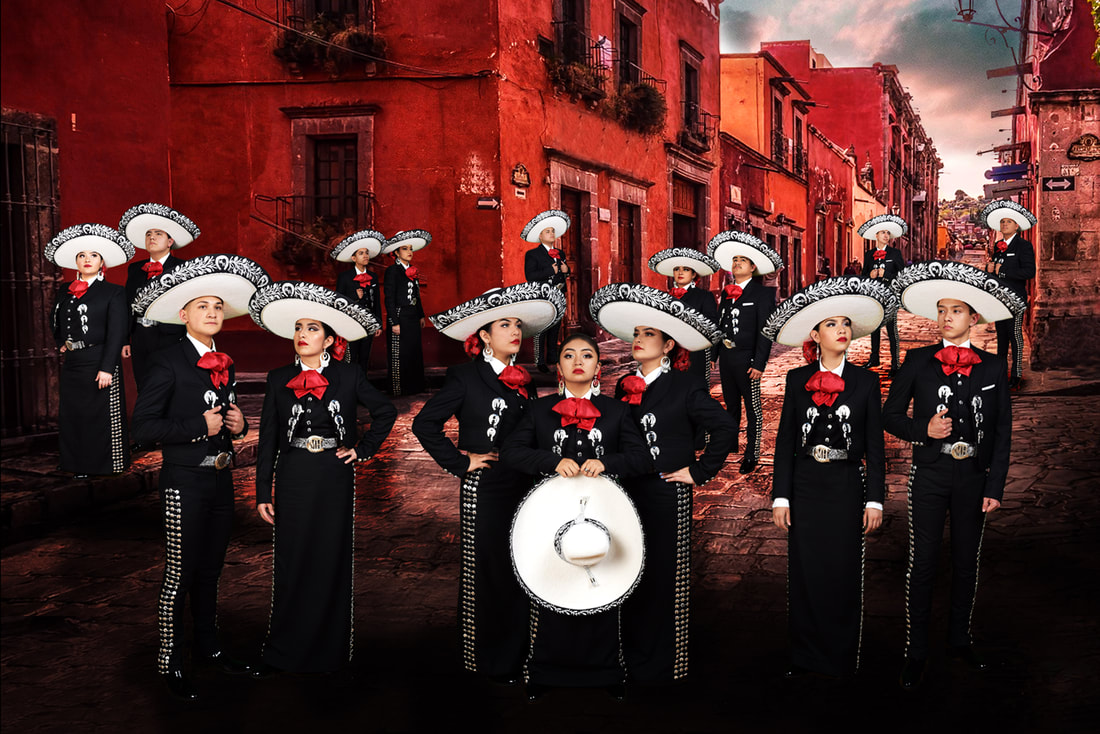From a cover of Gloria Gaynor’s I Will Survive to Blink 182’s All The Small Things, mariachi music has entered pop culture and left its mark. Do a quick YouTube search and you’ll find an impromptu mariachi cover of Post Malone’s Congratulations. You’ll find the all-Japanese Mariachi Samurai. And you’ll even find a mariachi band playing at Kobe Bryant’s memorial at Staples Center.
Mariachi music has gone a long way from its humble beginnings. Its origins lie in the rural communities of Mexico, performed by and for laborers. Its presence goes back as far as the late 1800s when it was still forming as its own genre. With the introduction of Spanish instruments, indigenous sounds and songs began to take a new form.
Although the core instruments have changed over the decades and vary in different parts of Mexico, today’s mariachi includes at least two violins, two trumpets, one Spanish guitar, one vihuela (a six-string guitar), and one guitarrón (a small acoustic bass). A harp may sometimes replace the guitarrón, and there are some mariachis that consist of over 20 instruments.
In 1934, newly-elected president Lazaro Cardenas had a mariachi play during his inauguration. The mariachi band became the symbol of Mexican identity, not only in the international community but also within Mexico as the country was still recovering from the Mexican revolution that ended in 1920.

As mariachi music solidified the country’s identity, the classic mariachi outfit also came into focus. Before this, mariachi groups would wear similar items of clothing that varied from white tunics to colorful rebozos, a handwoven shawl. The charro outfit eventually became the mariachi uniform, representing the rural origins of the music. Spanish influence also shows up here with the intricate embroidery that appears on the bolero, pants, and sombrero of the outfit.
Mariachi as the Mexican identity grew as artists of the time began incorporating the style into their music. Artists like Lola Beltran, Pedro Infante, and Jorge Negrete sang songs that defined a new generation: Mexico Lindo Y Querido, Me Canse De Rogarle, Cucurrucucu Paloma. Songs released over 70 years ago are still performed by today’s mariachis.
Mariachi groups eventually made their way to Los Angeles in the 1950s and 1960s establishing their new home in Boyle Heights. Much like Plaza Garibaldi in Mexico City, Plaza Mariachi in
Los Angeles became the home for mariachi musicians. As time passed, Boyle Heights became a Little Mexico of sorts, with Mariachi music as the neighborhood’s heartbeat.

The mariachi influence spread quickly once it arrived in Los Angeles. UCLA became the home of the first student-mariachi band in the country in 1961. Soon after, other universities throughout the state followed suit. The movement eventually made its way to Texas where the first mariachi festival was held in 1979. Mariachis also began appearing at Disneyland in the mid-1970s, exposing worldwide tourists to the music genre.in 1982, Mariachi Cobre became a permanent performer at EPCOT, the theme park in the Walt Disney World resort in Florida.
Since then, mariachis have been making appearances throughout the world. A second wave of mariachi artists like Vicente Fernandez, Pepe Aguilar, and Rocío Dúrcal propeled the music genre’s popularity into today. In 2011, UNESCO inscribed mariachi music as an Intangible Cultural Heritage of Humanity.
Modern mariachi bands are originating all over the world. Mariachi Flor De Toloache is the first all-female mariachi band from New York. Mariachi Herencia de México is a Chicago-based group that has Latin Grammy nominations for songs that made the top of both the Billboard and iTunes charts. And Mariachi Cobre, the permanent EPCOT performer, has its roots in Arizona.
Even though mariachi music now originates from all over the world, it is—and forever will be—the musical embodiment of Mexican identity.
Don’t miss the opportunity to listen to LIVE MARIACHI at the Long Beach International Tamales Festival
Featured image: Herencia de México / Photo courtesy of Mariachi Herencia De Mexico website




